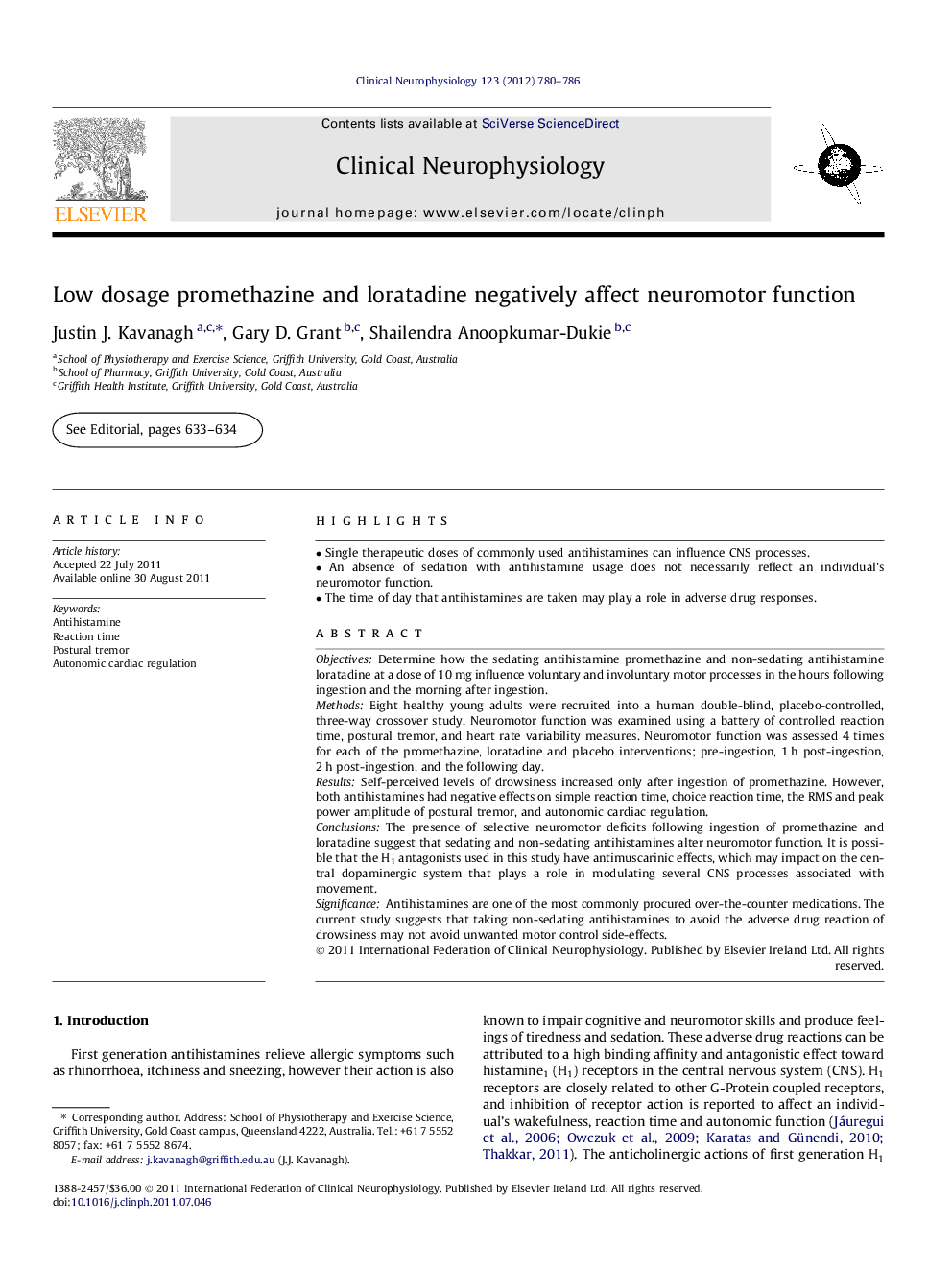| Article ID | Journal | Published Year | Pages | File Type |
|---|---|---|---|---|
| 3043609 | Clinical Neurophysiology | 2012 | 7 Pages |
ObjectivesDetermine how the sedating antihistamine promethazine and non-sedating antihistamine loratadine at a dose of 10 mg influence voluntary and involuntary motor processes in the hours following ingestion and the morning after ingestion.MethodsEight healthy young adults were recruited into a human double-blind, placebo-controlled, three-way crossover study. Neuromotor function was examined using a battery of controlled reaction time, postural tremor, and heart rate variability measures. Neuromotor function was assessed 4 times for each of the promethazine, loratadine and placebo interventions; pre-ingestion, 1 h post-ingestion, 2 h post-ingestion, and the following day.ResultsSelf-perceived levels of drowsiness increased only after ingestion of promethazine. However, both antihistamines had negative effects on simple reaction time, choice reaction time, the RMS and peak power amplitude of postural tremor, and autonomic cardiac regulation.ConclusionsThe presence of selective neuromotor deficits following ingestion of promethazine and loratadine suggest that sedating and non-sedating antihistamines alter neuromotor function. It is possible that the H1 antagonists used in this study have antimuscarinic effects, which may impact on the central dopaminergic system that plays a role in modulating several CNS processes associated with movement.SignificanceAntihistamines are one of the most commonly procured over-the-counter medications. The current study suggests that taking non-sedating antihistamines to avoid the adverse drug reaction of drowsiness may not avoid unwanted motor control side-effects.
► Single therapeutic doses of commonly used antihistamines can influence CNS processes. ► An absence of sedation with antihistamine usage does not necessarily reflect an individual’s neuromotor function. ► The time of day that antihistamines are taken may play a role in adverse drug responses.
